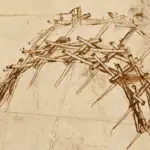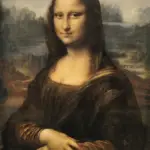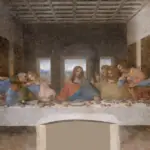Lost Leonardo Painting
The lost Leonardo painting refers to the controversial and mysterious Salvator Mundi.
This painting, allegedly attributed to Leonardo da Vinci, has sparked debate over its authenticity. Some experts question whether da Vinci created it.
This intrigue has only intensified since the painting was sold for a record-breaking $450 million, captivating art enthusiasts and historians worldwide.
The Salvator Mundi had humble beginnings, initially purchased for just $1,175 at a New Orleans auction house. It wasn’t long before a restorer found evidence of Renaissance brushstrokes beneath layers of varnish, suggesting its prestigious origin.
These findings led to intense scrutiny and interest, as highlighted in The Lost Leonardo documentary, which dives deep into the painting’s journey and controversies.
Art historians continue to explore the painting’s history, delving into its possible links to other lost works by Leonardo da Vinci.
Questions about its authenticity and origins remain a fascinating puzzle, making the story of the Salvator Mundi a captivating subject for those interested in art and mystery.
The Mystery of the ‘Salvator Mundi’
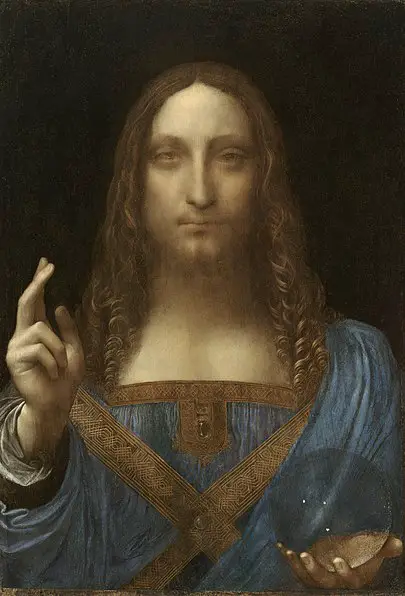
The Salvator Mundi
The Salvator Mundi painting believed to be a lost Leonardo da Vinci masterpiece, has fascinated art enthusiasts and historians alike.
Known as “Savior of the World,” the portrait depicts Christ holding a glass orb. This painting’s journey from anonymity to worldwide fame adds to its allure and mystery.
This creation was long considered a copy until it was rediscovered and restored in the 2000s. Experts have debated if it’s genuinely a da Vinci original or if other artists contributed to it. The artwork gained notoriety after its exhibition at the National Gallery in London in 2011.
An intriguing aspect is the transparent orb held by Christ, which does not distort light as expected. Some believe this suggests Leonardo’s involvement, as he had a firm grasp of optics and physics.
Computer scientists have recently investigated this detail and published that a hollow orb does not cause such distortion. After studying light refraction through various orbs, they estimated that the glass of the orb in Salvator Mundi was only a fraction of an inch thick, giving it its ethereal optical quality.
The painting’s value skyrocketed when it sold for $450 million at auction in 2017, making it the most expensive artwork ever sold. This vast sum reflects its debated authenticity and the world’s fascination with Leonardo’s genius.
Controversies around its ownership, including disputes involving a Russian billionaire, further contribute to its storied past. These ongoing battles over authenticity and ownership keep the lost Leonardo at the center of art world intrigue.
Historical Context and Discovery
The Salvator Mundi painting, often called the lost Leonardo, represents a remarkable chapter in art history. Once considered a mere copy, it emerged as a rare treasure linked to Leonardo da Vinci.
Art Historical Significance
The Salvator Mundi painting is of exceptional importance due to its attribution to Leonardo da Vinci, an artist with very few extant works.
The painting depicts Christ as the Savior of the World and showcases da Vinci’s mastery in capturing intricate details and human emotion. Its rediscovery in 2005 led to intense scrutiny and debate among art experts about its authenticity and artistic value.
Initially misidentified, the painting underwent extensive restoration, revealing exquisite Renaissance brushwork.
The da Vinci piece became a focal point during his exhibition at the National Gallery in London, captivating audiences with its artistry. The documentary The Lost Leonardo further explores these themes, providing deeper insights into its significance within art history.
Provenance and Ownership
Tracking the Salvator Mundi’s history involves uncovering a complex trail of ownership. Purchased for just $1,175 at a New Orleans auction, the painting’s journey is marked by obscurity and mystery.
Subsequent restoration and authenticating elevate its status, igniting a frenzy among collectors and museums worldwide. The painting famously sold for an astounding $450 million, setting records and reflecting its immense value.
This transaction involved a high-profile dispute, including the involvement of Russian billionaires and art dealers.
Its current ownership remains a topic of speculation as collectors vie for this extraordinary piece linked to one of the most celebrated artists.
Authentication Debate
The lost Leonardo painting, Salvator Mundi, has sparked significant debate about its authenticity. This debate involves art experts, scientific analysis, and questions about the painting’s origin and significant Salvator Mundi price.
Expert Opinions
Many art historians and specialists have offered perspectives on whether the Salvator Mundi is an authentic Leonardo da Vinci work.
Some experts argue that the painting’s style and technique closely match Leonardo’s known works. These supporters emphasize the historical documentation and stylistic details that suggest it is a missing da Vinci masterpiece.
Opponents, however, raise doubts due to differences from other Leonardo paintings.
Critics point to inconsistencies in brushwork and composition. Others question the painting’s provenance, suggesting gaps in its history cast doubt on its authenticity.
This divide in expert opinion keeps the discourse active, with each side presenting compelling arguments based on historical and artistic evidence.
Scientific Analysis
Scientific analysis plays a vital role in authenticating the lost Leonardo painting. Techniques such as infrared reflectography and X-ray fluorescence have been applied to explore the painting’s layers and materials.
These methods reveal underdrawings and materials consistent with the Renaissance period, supporting the claim that Leonardo might have painted it.
Despite these findings, some scientific analyses are inconclusive, leaving room for speculation. For instance, studies have shown evidence of Leonardo’s techniques and patterns suggesting later restorations.
This complex interplay of historical and scientific data leaves the question of the painting’s true origin partially open, fueling ongoing debates and interest in its authenticity. The investigation into the Salvator Mundi’s origins continues to captivate the art world.
Record-Breaking Auction Sale
When news that a long-lost Leonardo da Vinci painting, the “Salvator Mundi,” surfaced, art enthusiasts were eager to witness its significance.
The masterpiece, which shows Jesus Christ holding a crystal orb, captivated collectors worldwide. On November 15, 2017, the Salvator Mundi painting made history with its astonishing sale at Christie’s auction house.
- Auction Date: November 15, 2017
- Sale Price: $450 million
- Auction House: Christie’s, New York City
This event marked the highest price for a work of art at auction. The painting’s incredible journey from obscurity to fame involved years of verification and restoration, leading experts to authenticate it as an original Leonardo da Vinci piece.
The painting’s hefty price tag intrigued many. Art market analysts predicted a record-breaking sale due to da Vinci’s works’ rarity and historical value.
Since the lost Leonardo belonged to a select few surviving pieces by the Renaissance master, it was no surprise that bidding escalated dramatically.
The Salvator Mundi price surpassed the previous record of Picasso’s “Les Femmes d’Alger.” Collectors and historians regard the painting as a symbol of cultural and artistic achievement, making its sale a pivotal moment in art.
Today, the whereabouts of the painting remain a topic of interest for scholars and enthusiasts. The sale broke records and ignited discussions about the significance and meaning of the lost Leonardo painting in the context of art history.
Controversies and Theories
The Salvator Mundi painting, attributed to Leonardo da Vinci, has generated intense debates about its origin and significance. Issues range from cultural impacts to various conspiracy theories that cloud its authenticity.
Cultural and Political Impact
The Salvator Mundi painting galvanized attention worldwide when it shattered records by selling for $450.3 million at auction in 2017. This staggering amount made it the most expensive painting ever sold, drawing attention from art enthusiasts and political figures.
The painting’s sale led to a debate over its rightful attribution, as many questioned whether Leonardo da Vinci or his followers indeed crafted it.
The controversy echoed through museums and the art world, causing exhibition plans to be paused or canceled.
In particular, its expected display at the Louvre Abu Dhabi was delayed, raising eyebrows about its ownership and display rights. Its significance extends beyond art, impacting diplomatic relations, which is evident by discussions around Saudi Arabia’s involvement, adding a layer of complexity to its story.
Conspiracy Theories
Various conspiracy theories have enveloped the lost Leonardo painting, questioning whether it is an authentic creation of Leonardo da Vinci.
Some theorists argue that the painting might be a masterful forgery or partly the work of Leonardo’s students. Scrutiny intensified after its restoration revealed changes that further blurred the lines of its authenticity.
Several claims pinpoint the involvement of high-profile figures, asserting that the painting’s astronomical price could be a money-laundering operation.
Others theorize about its mysterious disappearance from public view, fueling speculation about the lost Leonardo painting’s whereabouts. These narratives contribute to public intrigue, shrouding the painting in a veil of myth and speculation.
Final Thoughts
The Lost Leonardo painting Salvator Mundi has captured global interest not only for its artistry but also because of its history.
After being bought for a mere $1,175 at a New Orleans estate sale, this piece went on to become the most expensive painting ever sold at auction. The excitement surrounding this artwork expanded with the release of documentaries like The Lost Leonardo.
Art historians and enthusiasts debate the painting’s authenticity, value, and history. Some argue about Leonardo da Vinci’s involvement in creating this masterpiece.
The controversial questions keep the painting in the limelight, giving it an air of mystery that intrigues the art community and the public.
The Lost Leonardo painting illustrates a tangled web of relationships and motivations, from its initial restoration to its high-profile sales.
The intersecting layers of art, commerce, and power make this story a compelling topic in both art history and modern culture.
Key Takeaways: The Lost Leonardo painting is more than just art; it’s a fascinating story of discovery, debate, and value. Its journey reflects the complex nature of the art world and how historical artifacts shape modern narratives.
Frequently Asked Questions
The Lost Leonardo Painting, often called “Salvator Mundi,” is a subject of intrigue and debate, especially regarding its authenticity and astonishing $450 million sale price.
Is the lost Leonardo painting real?
There is ongoing debate about the authenticity of the painting attributed to Leonardo da Vinci. Some experts believe it is a genuine work by Leonardo, while others question its origins and credit other artists from his workshop.
What is the lost Leonardo about?
The painting “Salvator Mundi” depicts Jesus Christ holding a crystal orb. It was created to showcase both spiritual and literal salvation.
Where is the lost Leonardo painting now?
The current location of “Salvator Mundi” remains uncertain. Some reports suggest it is held in Saudi Arabia, possibly on a yacht owned by Crown Prince Mohammed bin Salman.
What is Leonardo’s lost masterpiece?
“Salvator Mundi” is often referred to as Leonardo’s lost masterpiece due to its disputed attribution and exceptional value. It gained fame after being considered lost for centuries.
Who bought the $450 million painting?
Prince Badr bin Abdullah purchased the painting on behalf of Saudi Arabian Crown Prince Mohammed bin Salman. It was sold at a Christie’s auction in 2017.
What is controversial about Salvator Mundi?
Controversies surround its attribution to Leonardo da Vinci, with debates over whether it was painted by Leonardo himself or his workshop. Additionally, restoration efforts and the dramatic increase in value have fueled discussion.
How much did the lost Leonardo sell for?
The painting sold for $450 million at a Christie’s auction in 2017, making it the most expensive painting ever sold.
What is Jesus painting sold for $450 million?
“Salvator Mundi,” depicting Jesus Christ, sold for $450 million. Its sale set a world record for the highest price ever paid for a painting.
What is the most expensive picture of Jesus?
“Salvator Mundi” is the most expensive depiction of Jesus Christ due to its record-breaking sale price. Its extraordinary cost reflects its intriguing history and debated authenticity.
What were Leonardo da Vinci’s last words?
The exact last words of Leonardo da Vinci are not definitively recorded. However, it is often quoted that he expressed regret over not having accomplished more with his life.
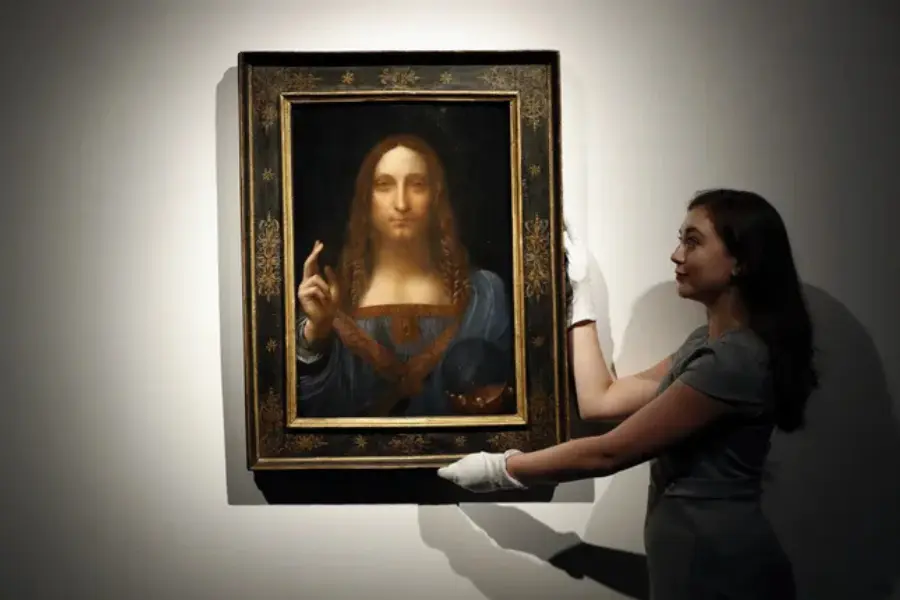
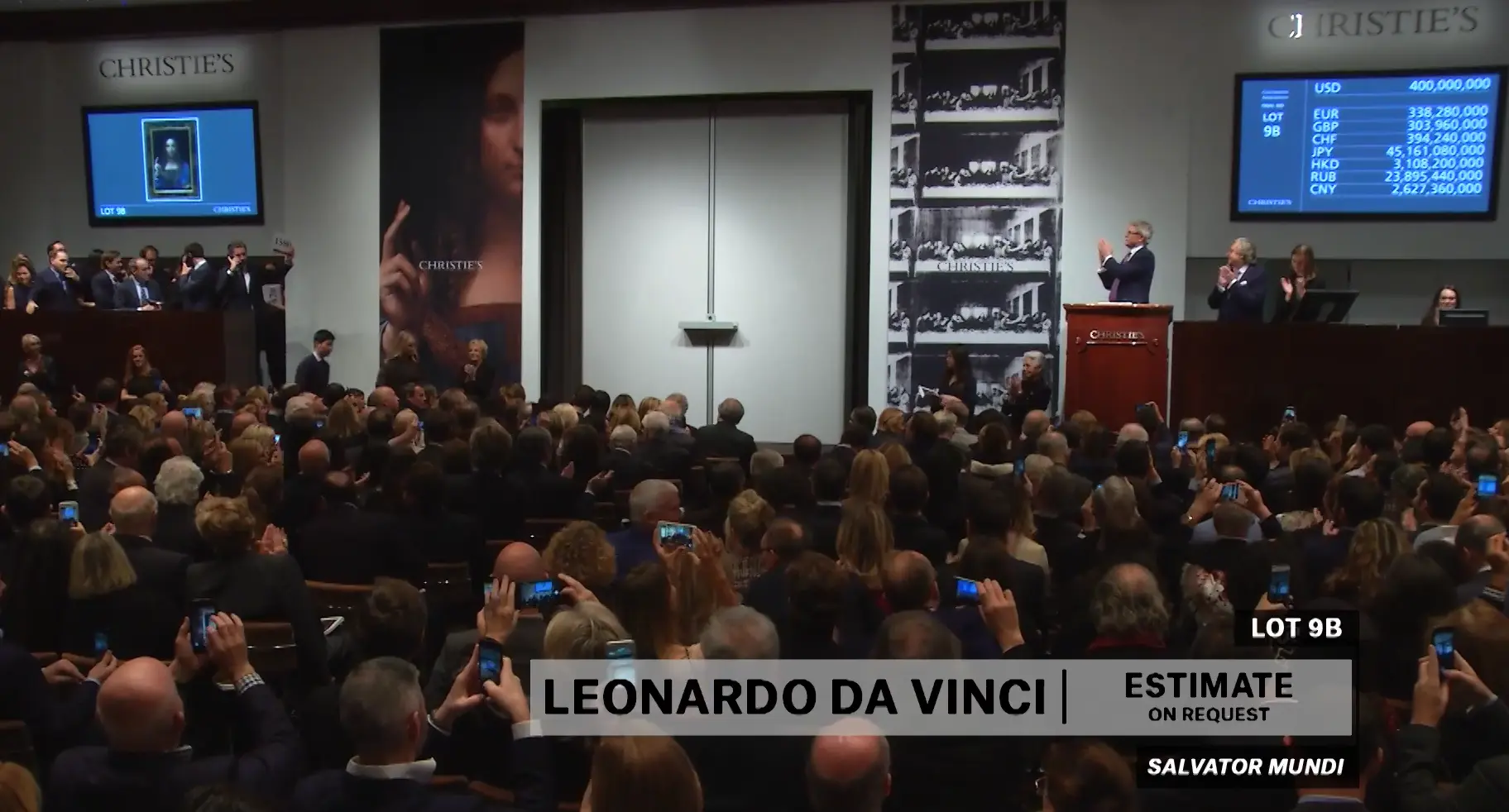
 I’m Leonardo Bianchi, the mind behind Leonardo da Vinci's Inventions. Thanks for visiting.
I’m Leonardo Bianchi, the mind behind Leonardo da Vinci's Inventions. Thanks for visiting. 